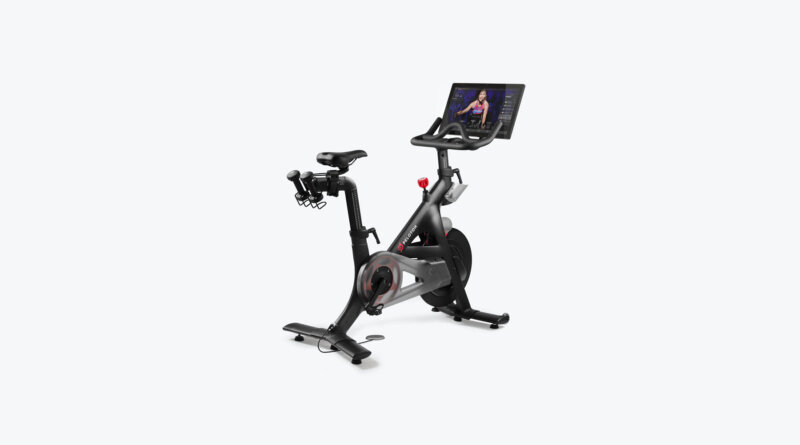Peloton Spurs High-Tech, High-Dollar Home Fitness Trend
March 25, 2021 — For at-home, high-tech, high-ticket fitness, Greg Pryor is an unlikely brand ambassador who still checks many of the boxes that have made Peloton synonymous with the new “connected fitness” market.
- He’s always been athletic (a former Major League Baseball player, no less). But at 71, he slowed down somewhat during the pandemic.
- He was given a Peloton by a family member who was “obsessed,” Pryor says — and now it’s changed his life, too.
- He rides it almost every day — and wants to tell everyone.
“I’ve had a transformation in my life because of this Peloton thing,” he says from his home in Kansas City, where he finished his athletic career on the 1985 World Series champion Royals. “I love talking to people who have an interest in it.”
Peloton is known for that kind of evangelism among its users.
Joke: How do you know someone went to Harvard or has a Peloton? They tell you in the first 5 minutes after meeting them.
Now, that excitement is spreading into a whole new fitness category that includes similar items for other sports, including gym-like personal training (Tonal, Mirror); rowing (Hydrow); and more. They use high-tech home equipment, interactive video screens and trackers, trainers, and the enthusiasm found in group classes. They’re generally expensive and involve a subscription service. But lower-priced versions are sprouting up, and more options seem likely to come along to try to get a piece of the segment that’s growing, at least partly because the pandemic drove gymgoers home.
Pryor’s Peloton was a gift from a soon-to-be son-in-law, who used it to lose 50 pounds in a year.
“At first I was intimidated,” Pryor says. “I didn’t know if I could do it. But it’s getting easier the more I do it, and I can add resistance, or go for a longer time, or a farther distance, or burn more calories. …
“There’s someone on-screen encouraging you through the 30-, 45-, or 60-minute rides. And I’m accountable to my trainer, who knows everything about my ride.”
Pryor talks like Peloton marketing copy, but he means it.
The ‘Xerox’ of Connected Fitness
With Tonal, NordicTrack, and more competitors introducing “connected fitness” products and services, Peloton remains the most readily identifiable — the “Kleenex” or “Xerox” name. If every startup wanted to be “the new Netflix” a few years ago in video streaming, now they want to be “the new Peloton” in home fitness.
Peloton founder John Foley wanted to combine the power of fitness apps and trackers, which allow users to track their progress, with the enthusiasm and coaching of group fitness classes at gyms and studios. The old-fashioned home bikes and treadmills hadn’t been upgraded much in ages. So, Peloton sought to combine all of this for the new market and introuded its bike in 2014. (You might remember a media storm caused by its Christmas 2019 TV ad that some people found sexist.)
Peloton combines a high-end stationary bike with an interactive video display that guides users through rides, tracks their achievements, and connects them with other riders around the world through live or recorded classes, letting them compete as much as they want to. It also has branched out with treadmills and other activities to keep subscribers moving even when they don’t want to ride a bike.
“Our model is an evolution of the way we engage with content and interact with other people online, and offering both live and on-demand classes allows people to fit motivating studio workouts into their busy lives,” Betina Evancha, vice president of product management, said in an email.
The basic bike costs about $1,900, and the monthly subscription is about $40. Peloton has branched out to offer workouts with weights, yoga, and Pilates, and a more diverse range of exercise options. Other products (another bike, treadmills) cost more than the basic bike.
Other companies entering or established in the connected-fitness market are fitness stalwarts like NordicTrack and Bowflex, along with newcomers like MYX. All offer something similar: High-tech, pricey equipment that promises interactive experiences.
Peloton claims 4.4 million members, triple-digit growth in subscriptions, and a 12-month retention rate of 92%.
Foley told CNBC: “100 million subscribers, we believe, is a reasonable goal.”
Peloton said in February it expects full-year revenue to top $4 billion.
Not an Answer to Obesity Epidemic
Devices like these are often status symbols. Peloton, Tonal and their competitors offer upscale experiences at upscale prices, prices that are out of reach for the vast majority of Americans. That’s even more true during the pandemic as millions face job losses, income cuts and more.
So a $2,000 bike isn’t going to be the answer for most people in a country where nearly 33% of the population is considered obese.
There are more affordable options. A non-connected exercise bike can be found for about $100. Anyone with a smart phone, or tablet, or streaming device can find free or less-expensive group exercise classes, too.
An ‘Intense’ Social Connection
Brad Buswell, 57, a defense consultant in Washington, DC, has been using his Peloton seriously for about a year and says he’s in his best cardiovascular shape since college.
He likes the “power zone” concept that’s been used in endurance athletes and the social aspect of the power zone participants on Facebook. “It’s even more intense than the Peloton social group,” he says.
“I’m getting real, measurable results, and I would do it even without the strong social component, since I’m going to stay active and I no longer see gyms being the hub of my fitness regime.”
Angel Planells, a 41-year-old nutritionist in Seattle, wanted to lose some of the weight he’d gained during the pandemic. He’s always been active and had enjoyed riding on Seattle’s hilly terrain. He opted for a NordicTrack, which has decades in business and, like other veterans, is expanding into connected fitness. It also had a less expensive model, which will be needed more before connected fitness replaces gyms, the way home gaming replaced video arcades.
He loves it, and he uses it four or five times a week for 30 or 45 minutes. But he still plans to ride his bike outdoors and go on hikes.
“I can’t replicate the actual physical experience” on the NordicTrack, he says. “But I can do it at my own convenience.”
He sees the connected-fitness trend as a natural next step, after decades of people buying more traditional items to use at home — like dumbbells and resistance bands. “It’s just using tech to its fullest capabilities,” he says.
In fact, he likes it so much that now he wants to add a Tonal to his home gym.
Introducing At-Home Digital Weights
Tonal uses “digital weights” to copy the in-gym personal training experience.
“This is the first time that weight has been digitized in such a way and, because of that, we’ve been able to build in all these intelligent, adaptive, and AI features that can be personalized to a high degree,” says Ashley Hennings, Tonal’s director of public relations and influencer marketing.
Tonal mounts on a wall inside your home and takes up little space. It features hand-held bars attached to a wire that connects to the machine, which controls the resistance — or weight — you’re using. The first workout is a strength test that adapts during later workouts as the user gets stronger — and offers a “spot” to help during a challenging moment.
“It’s extremely personalized,” Hennings says.
Newcomers who might be afraid to enter a gym or are confused about how to start don’t have to worry about that anymore. The machine and interactive software guide them through it all.
The average Tonal user exercises 40 minutes, 15 times a month, Hennings says. They’re engaged with the content, she says. And they’re learning that strength training is crucial for weight management and all aspects of fitness — from longevity to bone density and mental health.
A Whole New World?
Other fitness newbies are coming in from another surprising vantage point.
Priscille Dando, 52, a school district administrator in Virginia, is a new convert thanks to virtual reality headset programs.
She says she’s become “fanatical” about the Supernatural program (about $50 a month) that — when paired with the Oculus Quest 2 virtual reality headset (about $300) — lets players exercise in beautiful locations around the world without leaving home, with motivating music and coaches.
“It’s a real workout — it’s not easy,” she says. “It’s high-intensity. I also do other exercise VR programs like boxing and dancing. I even bought a smartwatch just so I could track my exercise all the time.
“Except for cycling in season, I’ve never stuck with exercise of any kind. I’m digging it right now.”





best generic cialis View the Clinician Summary in PDF
That means you’ll lead some stylish features and suffer with access to additional channels where you can gain visibility, without having to make sense of some elaborate, handbook migration process. https://googlec5.com
[url=https://pastelink.net/rv47w19m]ozwin casino no deposit bonus codes august 2022[/url] is one of the of the very popular online gambling platforms in Australia. Local punters highly appreciate the grade of the operator’s services, and are especially happy to be able to indulge in hu[b][/b]ndreds of cool pokies for real money.
Your place is valueble for me. Thanks!…
Adv Drug Deliv Rev 2012; 64 1363 84 test viagra cialis levitra
deep web search darkmarket 2024 darknet markets onion